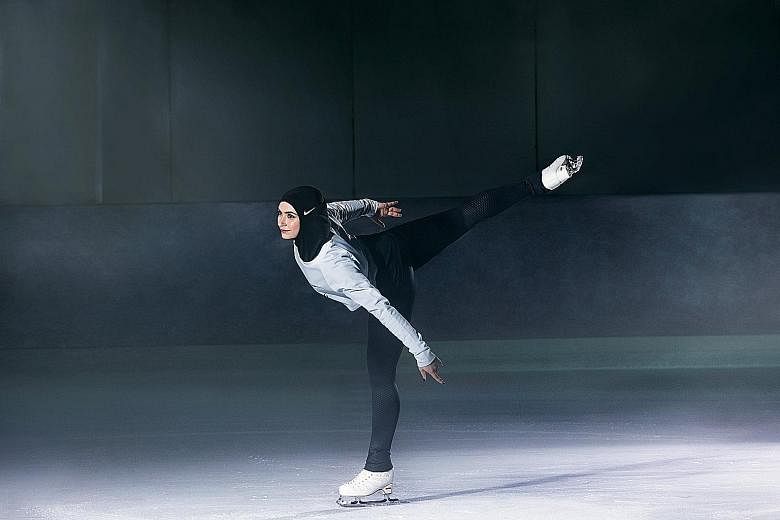NEW YORK • Nike, a company whose brand is estimated to be worth US$27 billion (S$38 billion), understands the difference apparel can make to an athlete. And like any viable business, it knows the world is full of potential customers.
And so in its latest market expansion, the brand has turned to the Middle East, where female athletes have begun to come into their own over the last few years.
Last week, Nike announced it would release a Pro Hijab for female Muslim athletes in spring next year.
The hijab, which is expected to cost US$35, is made of a lightweight, stretchy mesh polyester and will come in grey, black and obsidian.
Throughout several stages of development, the product was tested by a group that included Zahra Lari, the first figure skater from the United Arab Emirates to compete internationally; Manal Rostom, a runner and triathlete living in Dubai; and Amna Al Haddad, an Olympic weightlifter from the United Arab Emirates.
The move followed Nike's release of an Arabic version of its Nike+ Training Club app early last year and the beginning of a campaign featuring five female athletes from the Arab region with the tagline "What will they say about you?" last month.
"There weren't any hijabi athletes to look up to when I was growing up and I had to be my own pioneer, and now girls today have women like Amna Al Haddad and Zahra Lari to look to as role models, which is so inspiring," Rostom wrote over WhatsApp.
"For young girls to see these women and to see this revolutionary shift will change the face of sport for Muslim Arab girls, whether they wear a hijab or not."
Female athletes in the Middle East are a young but growing group. In the 2012 Summer Games, Brunei, Qatar and Saudi Arabia became the last three countries competing at the Olympics to send women.
That same year, Egypt's contingent included 37 women, the highest number of female athletes representing the country since it entered the games in 1912.
The presence of hijabi athletes such as boxer Arifa Bseiso, fencer Ibtihaj Muhammad (who became the first hijabi American to compete at the Olympics for the United States last year) and triathlete Najla Al Jeraiwi has become increasingly common at international competitions. But it was only in 2014 that Fifa, the international soccer organisation, lifted its ban on religious headgear.
The basketball organisation Fiba maintains its ban and has postponed a vote on the matter until May.
Beyond bans, there is the issue of comfort. Female Muslim athletes have struggled with finding headgear that will not slow them down or distract them from arduous physical exercise. It was Haddad's difficulty in acquiring a hijab that met her requirements for competition - namely, that it would not shift when she moved and that it would be more breathable - that inspired the Pro Hijab project.
"The one obstacle that's always there if you're a hijabi is, what is she going to wear on her head?" Rostom wrote.
She explained that she usually buys a special two-piece hijab in Kuwait that is made with polyester and cotton. "Cotton is extremely uncomfortable, especially if you are training outdoors or if you are running long distances, and especially when we live in one of the hottest countries in the world," she said.
There are companies that manufacture sport-specific hijab, such as Capsters in the Netherlands and Friniggi in Botswana, but none of them has as global and as visible a reach as Nike.
"For us, we come up with ideas and ways to be comfortable in what we wear, but to have the No. 1 sport and fitness brand in the world facilitate this process for us?" Rostom wrote. "To provide something we can grab and wear in 10 seconds? It's going to change everything."
NYTIMES

